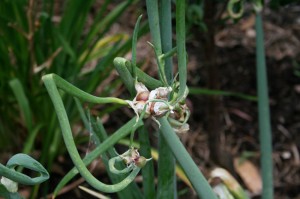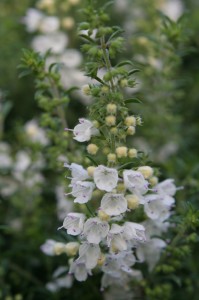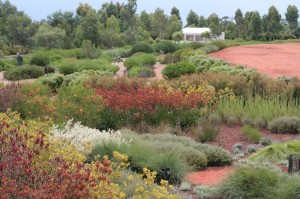Little known and used winter savory Satureja montana comes into its own in winter. As the days draw in and cold nights become more frequent, its warm spicy fragrance and taste enhances the flavour of slow cooked soups and stews. It grows as a small woody shrub with tiny dark green, opposite leaves and white flowers that grow in the leaf axils towards the ends of the somewhat sprawling branches. There is also a prostrate variety that has coarser leaves, larger white flowers and is much lower growing, but is otherwise similar. Other varieties have pink flowers. It is easily grown from seed or cuttings, or by detaching rooted pieces and replanting. This is best done in spring, but is usually also successful in autumn. Keep the plants neat by trimming back after flowering. Winter savory is in the same family (Lamiaceae) as thyme and rosemary and likes similar growing conditions. In other words a well-drained sandy loam soil and an open, sunny position. But I have found them to be tough little plants that thrive in a variety of positions as long as they do not stay wet for long periods. Read more

Tree onions produce bulbils instead of flowers. The bulbils sprout so that the plant looks like a small tree.
In the early 1900′s the American writer O. Henry wrote that “A stew without onion is worse’n a matinée without candy” and I’m sure that chefs all over the world would agree with him. Cooks and gardeners are familiar with the common bulb onion (Allium cepa), different cultivars of which provide a range of oniony flavours but what about the other onions: shallots and the ever-ready, potato and tree onions? When Jonathan Swift wrote in 1700
“But lest your kissing should be spoil’d,
Your onions must be thorough boil’d”
he was probably talking about these alternate onions which have been grown and valued by gardeners for centuries. They are usually propagated from bulbs which multiply to form more bulbs, rather than by planting seed. They are also disease and pest resistant making these onions much easier to grow than common bulb onions. Read more
I know this is not about edible or useful plants but I think it’s really exciting. Although Australian designers have entered gardens in previous years, this year is the first time that Australia will have a display garden in Main Avenue. Quite a coup considering there are only eight gardens in this avenue.
The Royal Horticultural Society’s Chelsea Flower Show is arguably the world’s most famous garden show. For almost 100 years this event has been showcasing plants and gardens in the grounds of the Royal Hospital in Chelsea, London. This year it takes place form 24th to 28th of May. Most of us will not be able to be there in person but we can follow the hard work and excitement of the the garden’s construction on their blog. The Australian Garden at Chelsea. This Australian entry is based on the multi-award winning Australian Garden at the Botanic Gardens in Cranbourne, Victoria, the second stage of which will open in 2012. The show garden at Chelsea has been created by renowned designer Jim Fogarty and tells the story of water as it journeys from the outback to the coast. The display garden will contain more than 2000 Australian native plants and works by Australian sculptors. Even the lawn is a native grass. So over the next three weeks, keep an eye on their blog and follow the construction of the garden. This is the culmination of more than a year of work and planning. Lets hope Australia wins another gold, or even best in show! — PW
The great news is that the garden has won a gold medal, one of only a handful. Huge congratulations to everyone involved! Go to their site to see the finished garden and link to the RHS site to see all the other winners.


